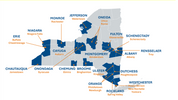Value based payment models are replacing fee for service reimbursement for healthcare providers across all specialties. Payments that had been made to physicians based on patient encounters at office visits, with higher reimbursement for greater problem complexities, have moved to reimbursement for better patient health outcomes.
This shift has potential to save carriers money, so they are offering so share some of those savings with providers. How much savings must be achieved, how it is to be measured, and over what period of time are too often undefined variables at the point of physician contract signing.
Shared savings can bring with it shared losses, an exposure with its own opaque calculations. Providers bear some cost risk just from capitation, and then risk further reduction in physician reimbursement on the promise of an upside, the possibility of shared savings if any are identified. In some risk models, shared losses or financial penalties will be assessed against providers when those same opaque calculations find not enough savings occurred.
Physicians are now faced with a series of choices about which value based payment model to choose in this new payment landscape, amid many variables in how the math will be performed, and who will be performing it. The models and the entities calculating payments, as well as the composition of the boards of directors making the decisions are too new to have their own performance data. Therefore it is not possible to determine with certainty up front whether a given contract is a good idea.
When the sister model of Accountable Care Organizations (ACOs) were introduced, and as they have progressed, many providers found they had a tremendous amount of additional documentation and calculations to perform, for little to no realized payment, and many did not have electronic health record (EHR) systems up to the task. Even if they did, or if they joined a Meaningful Use program, the ACO as a third party entity remained in control. It has the right to choose its own internal governance with fiduciary duty to the entity, not to its member providers, and has the power to distribute any "cost savings" among high performing physicians, or withhold, and to pay its own debts and reinvest in itself. The payment amounts may be tiny or not realized at all. This problem occurs whenever a value based payment model is created in any specialty. Take, for example, what is currently underway in the field of nephrology.
For kidney care, dialysis, and transplant services, a new model has been added to the Medicare reimbursement arena for 2022: Comprehensive Kidney Care Contracting (CKCC).
Like the ACO model, the CKCC model will be administered by a stand alone entity with its own Tax ID number, called a Kidney Care Entity (KCE). Each KCE shall have a board of directors who owe their primary fiduciary duty to the KCE, not to a practice or transplant center.
The CKCC model focuses on Chronic Kidney Disease (CKD) patients in Stages 4 and 5, and End Stage Renal Disease (ESRD) patients. Part of Kidney Care Choices (KCC) and launched on 1/1/22, CKCC provides financial incentives to nephrology providers if they achieve swift and successful (over three years) kidney transplantations, faster outpatient dialysis preparation, and move patients away from expensive dialysis centers to home dialysis.
To oversee this huge shift in care models for Medicare, KCE will process all provider claims, and at its discretion, will oversee payments to providers and choose its board of directors.
Provider members will be paid a monthly capitation amount, quarterly capitation payments, a financially impactful kidney transplant bonus paid out over three years provided the transplant is successful, and/or the most opaque of the payment pieces, something called Shared Savings/Shared Losses.
There are three risk levels from which providers may choose when they join a model: Graduated, Professional (50% at risk), and Global (100% at risk).
A KCE must dedicate 20% of any measured shared savings to its nephrology member providers, 20% to its transplant provider members, but can keep 60% of the calculation for itself to be disseminated in its discretion.
Upside risks can be as small as 0% - +8%, and as low as -10% - -0%. Compare these downside risks to Performance Based Adjustments (PBA) in the Kidney Care First model where downside risks can expose the bottom 50% performing physicians to as much as 20% loss, and offer the top 50% of performing physicians up to 30% performance adjustments.
KCE contracts typically provide for appeal to its Board for any issues around calculation and disbursement of shared savings, if any, and binding arbitration as the sole means of working out any unresolved issues.
Bonuses and shared savings, when identified, are not delivered quickly. Providers must sign a contract and deliver services for 12 months, then wait up to an additional 6 months for their performance year to be compared with their own previous 18 months and compared to other regional providers. Their prospective payment may not be made until the first 6 months of the following year. Transplant bonuses are paid out over three years, heavily weighted toward the 3rd year, but only if successful in keeping patients off dialysis.
If a provider decides they do not wish to remain in the contract, they will not be able to leave for 1 1/2 - 2 years, and may not join a different KCE for one year after such termination.
As providers learn these metrics for themselves, they may determine they have enough patients and expertise to manage their own KCE, and may wish to join together to form one. But their current KCE contract may not allow them to do so, and in fact can contain language requiring the providers to offer their old KCE the right of first refusal to purchase 50% of the new enterprise, effectively stifling competition. While such clauses could likely be held unenforceable as against public policy (stay tuned) such a lawsuit is expensive and a financial burden for any practitioner stuck in such a situation.
What is a provider to do. Without KCE performance data and a peek into the future through 2026, a provider can best serve their practice by calculating their own performance data with precision. Large nephrology practices and transplant centers should hire their own full time incentive reimbursement specialist to determine whether their KCE is paying them appropriately, and what their reasonable accounts receivables should reflect.
This is especially true for any practice needing valuation for growth, development, financing, sale, merger, or other financial transactions from at least 2022-2026.
Photo credit: healthcarefinancenews.com
"Providers, especially those needing accurate accounts receivables, should hire their own value based shared savings incentive reimbursement specialist, to be sure they are paid appropriately."
 unknownx500
unknownx500










